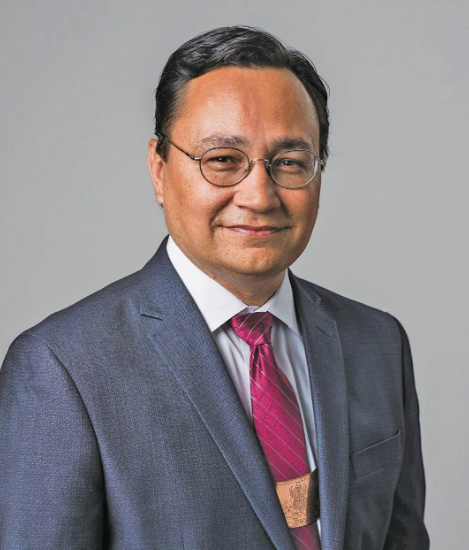To grow the economy across the Cherokee Nation Reservation, we must be forward thinking, collaborative and willing to work across borders. As the largest tribe in the United States, we have unique opportunities to grow prosperity for our citizens. We also need the support of our neighbors, because we will all rise or fall together with the regional economy.

I am optimistic that we are on the rise, thanks in large part to the innovative collaborations between our tribe and our neighbors. Cherokee Nation is a founding partner in the Heartland Advanced Medical Manufacturing Regional Cluster (HAMMRC), a campaign to attract and keep high-quality health care manufacturing jobs in northeast Oklahoma and northwest Arkansas. The goal of HAMMRC is to grow a medical manufacturing cluster, spearheaded by the communities along the Highway 62 corridor.
Want more Native News? Get the free daily newsletter today.
The coalition involves economic development entities in both states, eight cities, three counties and the Cherokee Nation. The willingness of these diverse entities to work together on a regional basis gives us a great competitive advantage.
The plan, originally developed by the Fayetteville Chamber of Commerce and Tahlequah Regional Development Authority, focuses on manufacturing devices, components and equipment for the health care industry. We believe it will create careers for our citizens that tie directly into other efforts in the Science, Technology, Engineering, the Arts and Mathematics (STEAM) arena where Cherokee Nation is leading the way.
HAMMRC further positions Cherokee Nation as an integral part of the region’s bright future. We can leverage the needs of Indian Country’s largest health system, our workforce development programs and an array of economic development efforts to create even more prosperity for our people.
The long-term goal is to make the region one of the top health care production sites in the world. That may sound highly ambitious for rural Oklahoma and Arkansas. However, the Cherokee Nation brings a lot to the table. We already have the four-year medical school and new outpatient center, along with future plans for a new hospital and multiple personal protective equipment (PPE) manufacturing sites.
We saw early in the Covid-19 crisis that PPE was far too difficult to obtain. Struggles accessing PPE harmed not only Cherokee Nation, but our friends and neighbors as well. We vowed to do better for our people. This partnership increases our resources and reduces potential delivery time for vital health equipment going forward, which will make us even better prepared in case of another health care crisis.
The benefits go well beyond improved access to equipment. Jobs in the health care manufacturing field pay about $25 to $30 an hour. This partnership will create those good jobs in the heart of Cherokee Nation – places like Cherokee County and Adair County. As we keep investing in STEAM careers, we know companies will be attracted to our well-trained workforce and a quality of life that is second to none.
Our education and career services departments have shown outstanding leadership in preparing Cherokees for workforce success. But to develop a sustainable economy, we can’t simply give people skills and then hope they find jobs. We must directly recruit the kind of tech-driven jobs in health care manufacturing that can transform the region.
Whether in health care, aerospace, gaming and hospitality, the film industry, federal contracting or any of the other enterprises we are involved in as a tribe, Cherokee Nation excels at giving hardworking, creative Cherokees the platform to achieve their dreams. Now with this collaboration, we are expanding another solid business sector into our diverse economic mix on the Cherokee Nation Reservation. We are looking into the future to grow our economy for the generations to come.
Chuck Hoskin, Jr. is the principal chief of the Cherokee Nation.
More Stories Like This
Superhuman. Should We Be Better Than We Are?Senator Ben Nighthorse Campbell Proved Representation Matters
The Lie We Keep Telling About Wounded Knee
Another Weapon of Mass Destruction
Colorado cannot heal until it confronts Sand Creek honestly
Help us defend tribal sovereignty.
At Native News Online, our mission is rooted in telling the stories that strengthen sovereignty and uplift Indigenous voices — not just at year’s end, but every single day.
Because of your generosity last year, we were able to keep our reporters on the ground in tribal communities, at national gatherings and in the halls of Congress — covering the issues that matter most to Indian Country: sovereignty, culture, education, health and economic opportunity.
That support sustained us through a tough year in 2025. Now, as we look to the year ahead, we need your help right now to ensure warrior journalism remains strong — reporting that defends tribal sovereignty, amplifies Native truth, and holds power accountable.
 The stakes couldn't be higher. Your support keeps Native voices heard, Native stories told and Native sovereignty defended.
The stakes couldn't be higher. Your support keeps Native voices heard, Native stories told and Native sovereignty defended.
Stand with Warrior Journalism today.
Levi Rickert (Potawatomi), Editor & Publisher
